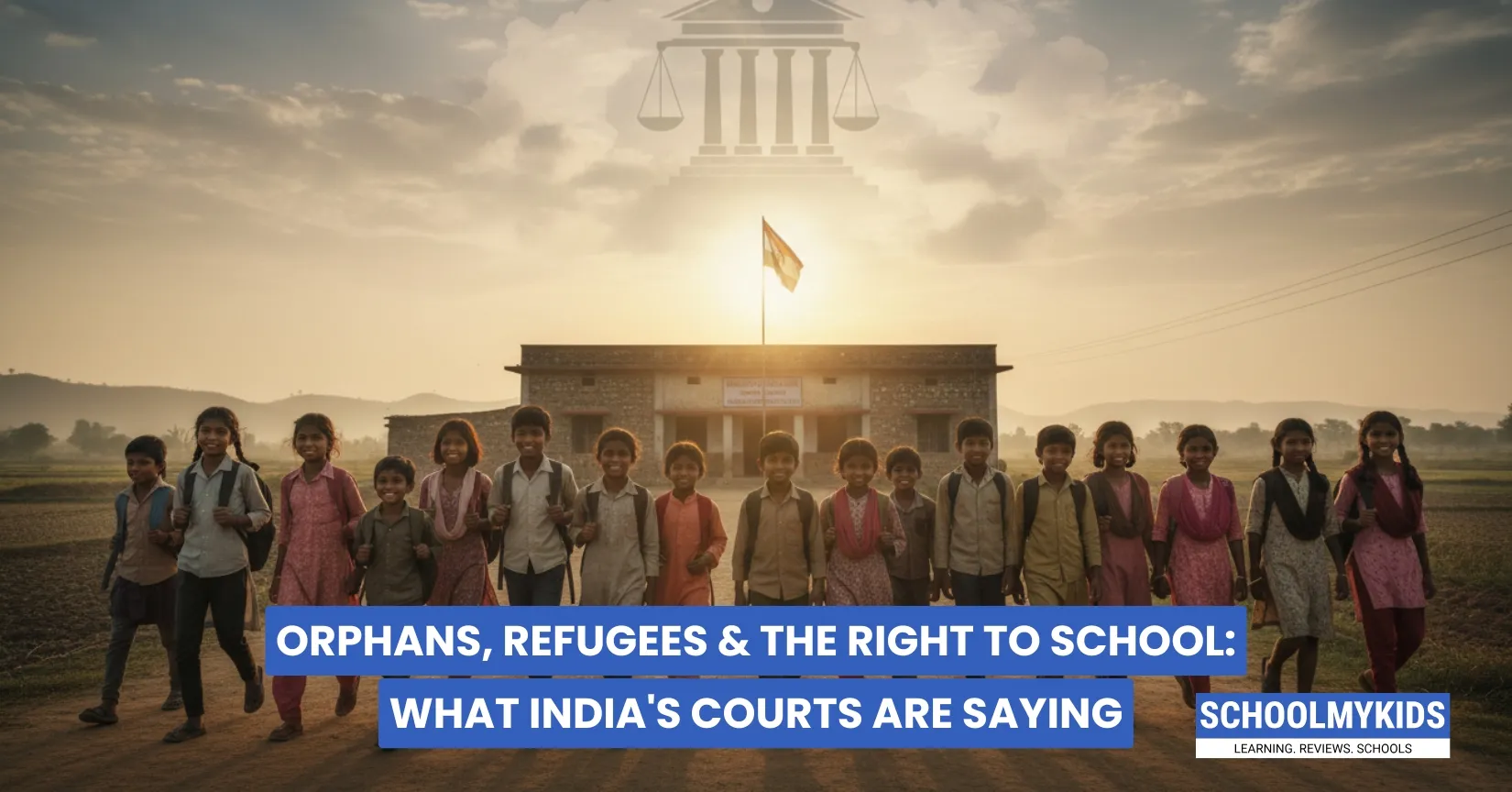Imagine a child standing outside a school gate, watching others walk in with bags and books. She wants to learn, but she’s turned away because she doesn't have an Aadhaar card. Now imagine that child being an orphan or a refugee, already carrying the weight of displacement, loss, and fear. That’s the harsh reality India’s Supreme Court recently questioned, and slowly, the system is listening.
The Supreme Court’s Message: School for Every Child
In February 2025, the Supreme Court made an important observation: “No child will be discriminated against in education.” This came while hearing a plea seeking access to public schools and hospitals for Rohingya refugees in Delhi.
The issue sounds specific, but it represents something much bigger. Refugee children in India, mostly from Myanmar’s persecuted Rohingya community, have been denied admission to government schools because they don’t possess Aadhaar cards. Many children live in informal settlements across Shaheen Bagh, Kalindi Kunj, and Khajuri Khas, surviving on scrap work or low-paying jobs instead of going to school.
The court, while seeking data on where these families live, made it clear that education cannot be denied based on identity documents. Simply put, being stateless should not mean being school-less.
What Makes This Discussion Crucial
India’s Right to Education (RTE) Act guarantees free and compulsory education to every child between 6 and 14 years of age. Article 21A of the Constitution protects this right not just for citizens but for all children living on Indian soil. Yet in practice, many refugee and orphaned children fall through the cracks because schools demand documentation that they cannot produce.
The Supreme Court’s stance, reinforced through several earlier cases, is that protection and education must extend to all minors, regardless of citizenship. This isn’t just about legal interpretation; it’s about humanity and fairness.
Why Refugee Children Are Denied Admission
The challenge is largely administrative. Rohingya refugees in India possess UNHCR refugee cards, not Aadhaar cards. Without them, they are denied access to schools, hospitals, and public schemes.
A Delhi government circular from December 2024 even directed schools to refuse admission to what it labelled “illegal migrants.” This included Rohingya children. The NGO Rohingya Human Rights Initiative then approached the Supreme Court, arguing that children were being punished for something completely beyond their control, their lack of paperwork.
Most of these children have lived in India for years. Their families fled Myanmar’s Rakhine state, where widespread violence, persecutions, and displacement were recognised globally as acts capable of genocide. The UN reports say almost half of the world’s refugee children remain out of school, and India’s own numbers sadly contribute to that statistic.
What the Courts Are Trying to Tackle
The Supreme Court’s latest hearings are an attempt to bridge the gap between India’s constitutional promise and its real-world system. The bench, Justices Surya Kant and N. Kotiswar Singh, asked for details of refugee settlements to determine how children can be given access to schooling near their homes.
Over the years, similar PILs have come up asking the same question: Can refugee children study without identity proof? Courts have repeatedly said yes, they should be allowed. But implementation is uneven.
In 2017, the National Commission for Protection of Child Rights stated that schools in Haryana are bound to admit any child who seeks admission, regardless of documentation. Yet many local schools still hesitate, partly due to unclear instructions from state departments.
What This Means for India’s Education System
This isn’t just about one community. The ruling extends to every child without family, documentation, or citizenship, like orphans, migrant children, and refugees alike. Their inclusion is not charity; it is the measure of what we, as a society, call justice.
It also pushes schools to rethink admission rules and for governments to create a simpler process for undocumented children. Teacher training and local guidelines must include sensitivity to displaced children, ensuring they feel accepted, safe, and ready to learn.
If refugee or orphaned children are denied the right to education, we don’t just fail them; we fail the idea of inclusive education itself.
Conclusion
The Supreme Court’s words remind us that India’s classrooms are meant to be places of hope, not exclusion. A child’s right to learn must rise above nationality, religion, and paperwork. When we let displaced children study, we give them a path to rebuild their lives and prevent the growth of another generation trapped in poverty and marginalisation.
Legal clarity is important, yes. But moral clarity is even more critical.
Every teacher, school, and policymaker should read this court order not just as a legal guideline but as a call to compassion, an appeal to remember that education is not a privilege; it’s a lifeline.
Whether a child carries an Aadhaar card or a UNHCR card, they still carry the same dream to learn, to belong, and to build a future.









Be the first one to comment on this story.